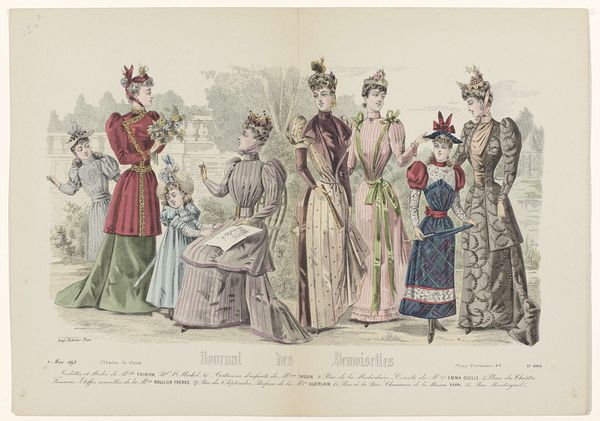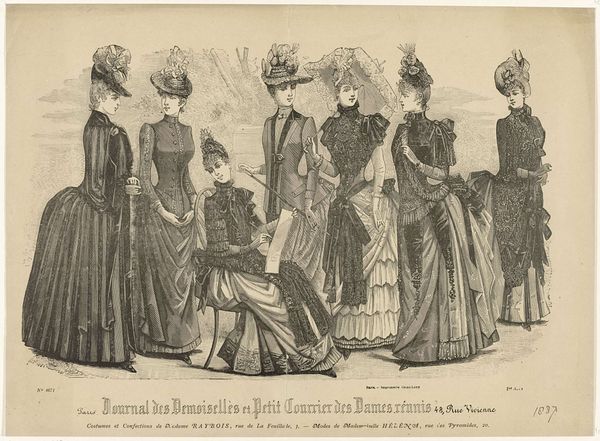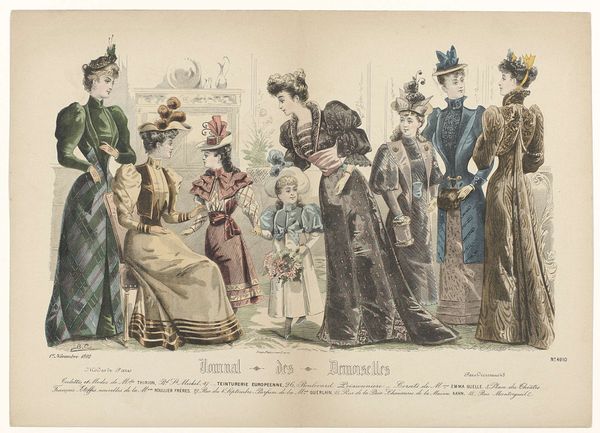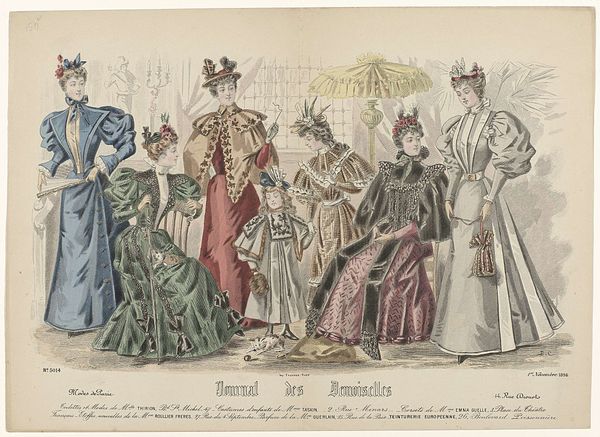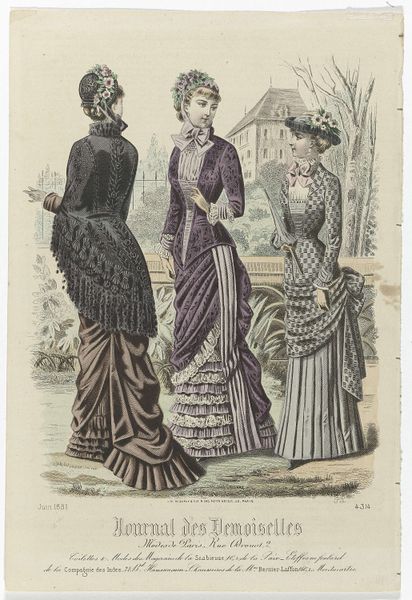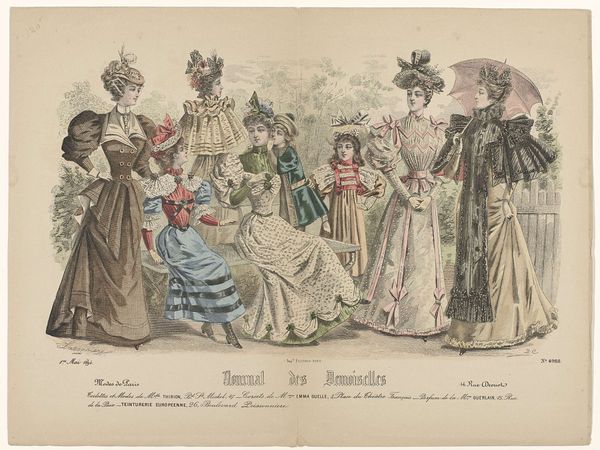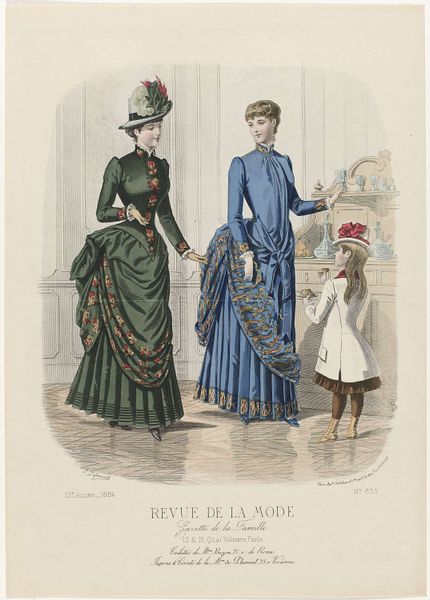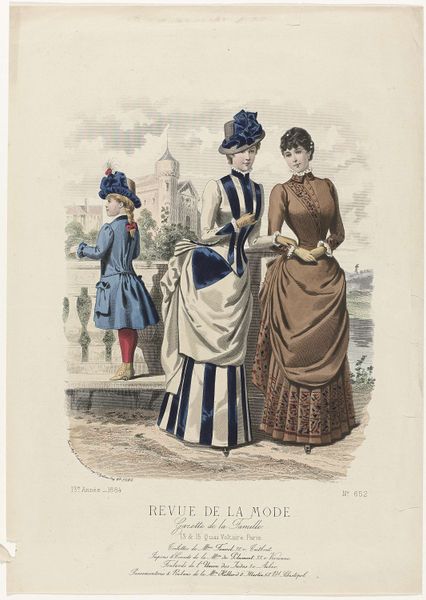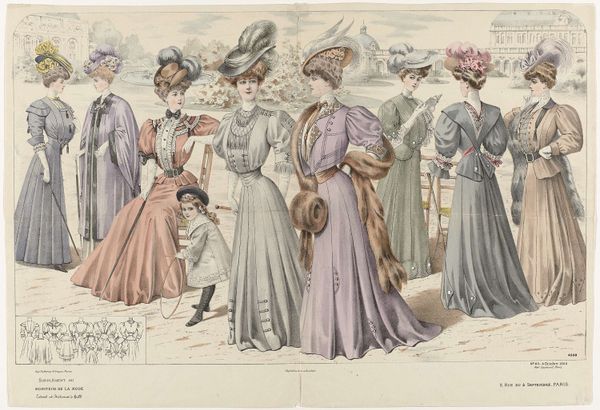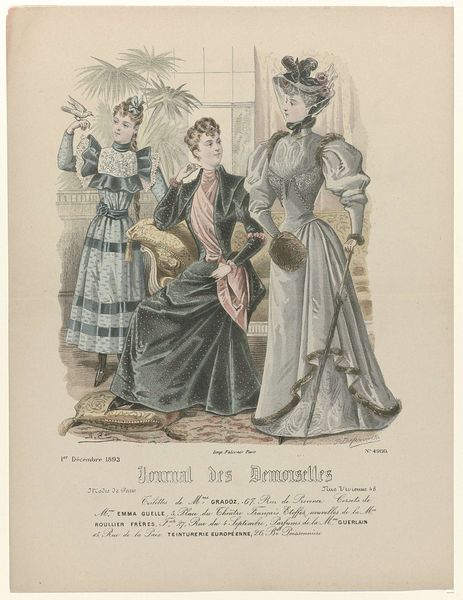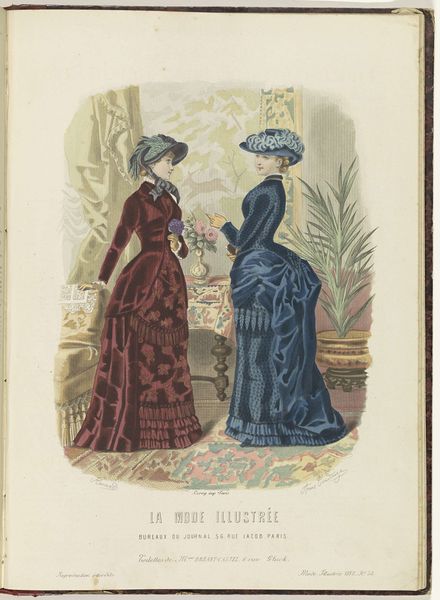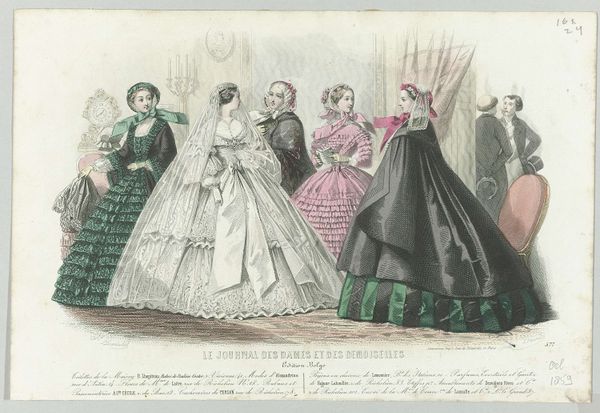
Le Moniteur de la Mode, 1879, No. 1648 : Modèles de la M.on Degon-Pointud (...) 1879
0:00
0:00
mixed-media, print, etching, photography
#
mixed-media
# print
#
impressionism
#
etching
#
photography
#
historical fashion
#
genre-painting
#
history-painting
Dimensions: height 309 mm, width 438 mm
Copyright: Rijks Museum: Open Domain
Editor: Here we have “Le Moniteur de la Mode, 1879, No. 1648,” attributed to Edouard Tailland, using mixed-media, including photography and etching. It feels like stepping into a very formal, late 19th-century fashion show. All those layered textiles and the way they define the female silhouette. What strikes you about this piece? Curator: The key is to consider the production and distribution of images like these. "Le Moniteur de la Mode" wasn't just showcasing fashion; it was a business. The materials, the printmaking techniques – etching combined with photography – facilitated mass production, driving consumption. It connected Parisian designers with a wider audience and fuelled the rise of department stores and a culture of fast fashion. Look at the details. Editor: You're right, I hadn't really thought about how these images themselves were a commodity. Does the artistry of the etching matter then, or is it really just about the clothing? Curator: It's both. The craftsmanship in the etching elevates it, granting a certain cultural capital and blurring the lines between art and commercial enterprise. These weren't necessarily viewed as “high art,” yet, consider the skill involved, the labour invested. We should look beyond the immediate depiction of fashion. We must think about the workforce producing fabrics, assembling these clothes, distributing images... who were they and what were their conditions? It exposes class structures and labour practices. Editor: So, by focusing on the materials and process, we can understand how this image participates in broader social and economic networks? Curator: Precisely! And how "art" itself becomes entangled with processes of making, distribution and commodification. What have you gathered? Editor: I see now that even what seems like a straightforward fashion plate opens up a much larger window onto the era's economy, and even labor exploitation of women's craft. Curator: Indeed!
Comments
No comments
Be the first to comment and join the conversation on the ultimate creative platform.
